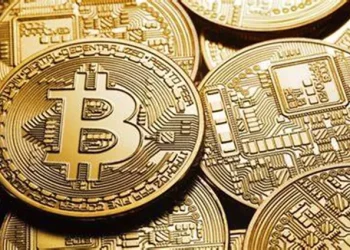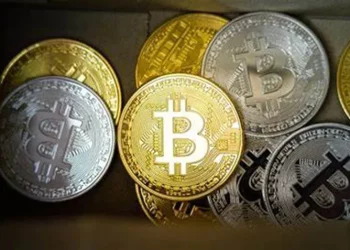Physical bitcoins are a fascinating part of cryptocurrency history. Though Bitcoin itself is purely digital, some companies and enthusiasts have created physical coins to represent ownership of real Bitcoin. These coins often come with private keys embedded or hidden, allowing the holder to redeem the digital currency. But how many physical bitcoins actually exist? The answer is not straightforward, as different types have been made over the years, some rare and valuable, others more common. This article explores the history, types, and estimated numbers of physical bitcoins in the world.
The Concept of Physical Bitcoins
Bitcoin was designed as a digital currency, meaning it exists only in electronic form. However, early adopters and collectors wanted a way to represent Bitcoin in the physical world. This led to the creation of physical bitcoins—tangible items that could hold real Bitcoin value.
These physical coins usually contain a tamper-proof hologram or seal hiding a private key. When the hologram is peeled off or the seal is broken, the private key is revealed, allowing the owner to transfer the Bitcoin to a digital wallet. Some physical bitcoins were made as promotional items, while others were designed as limited-edition collectibles.
Early Physical Bitcoins
The first known physical Bitcoin was created in 2011 by Mike Caldwell, a software engineer from Utah. He called his creation the Casascius Bitcoin. These coins were made from metals like brass, silver, and even gold, with denominations ranging from 1 BTC to 1,000 BTC.
Each Casascius coin had a hologram sticker covering the private key. The hologram was designed to show a “void” pattern if someone tried to remove it, ensuring security. At the time, Bitcoin’s price was much lower, so these coins were relatively affordable. Today, unopened Casascius coins are highly sought after by collectors.
How Many Casascius Bitcoins Were Made?
Mike Caldwell minted Casascius coins from 2011 to 2013. During this time, he produced approximately 27,000 physical bitcoins in various denominations. However, not all of these coins still exist in their original form. Many have been “redeemed,” meaning the hologram was removed, and the Bitcoin was transferred to a digital wallet.
Estimates suggest that only a few thousand unredeemed Casascius coins remain. Some of these are held by collectors, while others may have been lost or forgotten. Because of their rarity, unopened Casascius coins can sell for much more than their Bitcoin value.
Other Types of Physical Bitcoins
Besides Casascius coins, other companies and individuals have created physical bitcoins. Some of the most notable include:
Denarium Bitcoins
Denarium, a Finnish company, started producing physical bitcoins in 2013. Unlike Casascius coins, Denarium coins do not come pre-loaded with Bitcoin. Instead, they have a blank space where buyers can engrave their own private key. This makes them more of a novelty item rather than a stored-value product.
Denarium has made thousands of these coins, but since they do not hold Bitcoin by default, their exact number is less significant than Casascius coins.
Titan Bitcoin
Titan Bitcoin was another early entrant in the physical Bitcoin market. These coins were similar to Casascius coins, featuring a hologram-sealed private key. However, Titan Bitcoin did not gain as much popularity, and production numbers were much lower.
OpenDime
OpenDime is a modern take on physical Bitcoin. It is a USB-like device that acts as a bearer instrument for Bitcoin. Unlike traditional physical coins, OpenDime does not have a fixed denomination. Instead, users can load any amount of Bitcoin onto it.
Since OpenDime is still in production, the exact number in circulation is unknown, but it is likely in the tens of thousands.
The Legal Challenges of Physical Bitcoins
In 2013, the U.S. Financial Crimes Enforcement Network (FinCEN) issued regulations affecting physical bitcoins. The agency classified pre-loaded physical bitcoins as “money transmission,” requiring manufacturers to obtain licenses.
This ruling led Mike Caldwell to stop producing Casascius coins. Other companies either shut down or adjusted their designs to comply with regulations. As a result, the era of pre-loaded physical bitcoins largely ended in 2013.
Collectors and the Secondary Market
Because pre-loaded physical bitcoins are no longer made, they have become collector’s items. Unopened Casascius coins, in particular, are highly valued. Some sell for double or triple their Bitcoin value due to their rarity.
Online marketplaces and auction sites often feature physical bitcoins. Collectors look for coins with intact holograms, as these are considered more valuable.
How Many Physical Bitcoins Still Hold Bitcoin?
It is difficult to determine exactly how many physical bitcoins still contain unredeemed Bitcoin. Many early coins were redeemed when Bitcoin’s price rose, making them worth thousands of dollars. Others may have been lost or destroyed.
Experts estimate that only a small percentage of the original Casascius coins remain unopened—perhaps a few thousand. Other types of physical bitcoins, like Denarium or Titan Bitcoin, are harder to track since they were produced in smaller quantities.
The Future of Physical Bitcoins
With regulations restricting pre-loaded physical bitcoins, new innovations have emerged. Products like OpenDime offer a legal way to create physical Bitcoin wallets. However, the classic Casascius-style coins are unlikely to return unless laws change.
Despite this, physical bitcoins remain a popular collectible. They represent an important part of Bitcoin’s history and continue to attract interest from crypto enthusiasts and investors.
Conclusion
Physical bitcoins are a unique blend of digital currency and tangible art. While most were produced in the early 2010s, they remain a fascinating part of cryptocurrency culture. The exact number of existing physical bitcoins is unknown, but estimates suggest only a few thousand unredeemed Casascius coins remain, along with other types like Denarium and Titan Bitcoin. Due to legal restrictions, pre-loaded physical bitcoins are no longer made, making them rare and valuable. Whether as collectibles or historical artifacts, physical bitcoins hold a special place in the world of cryptocurrency.
Related Topics:
How to Create a Digital Wallet for Cryptocurrency
Cryptocurrency How Does It Work
How Is a Cryptocurrency Payment Different From Other Digital Transactions
















